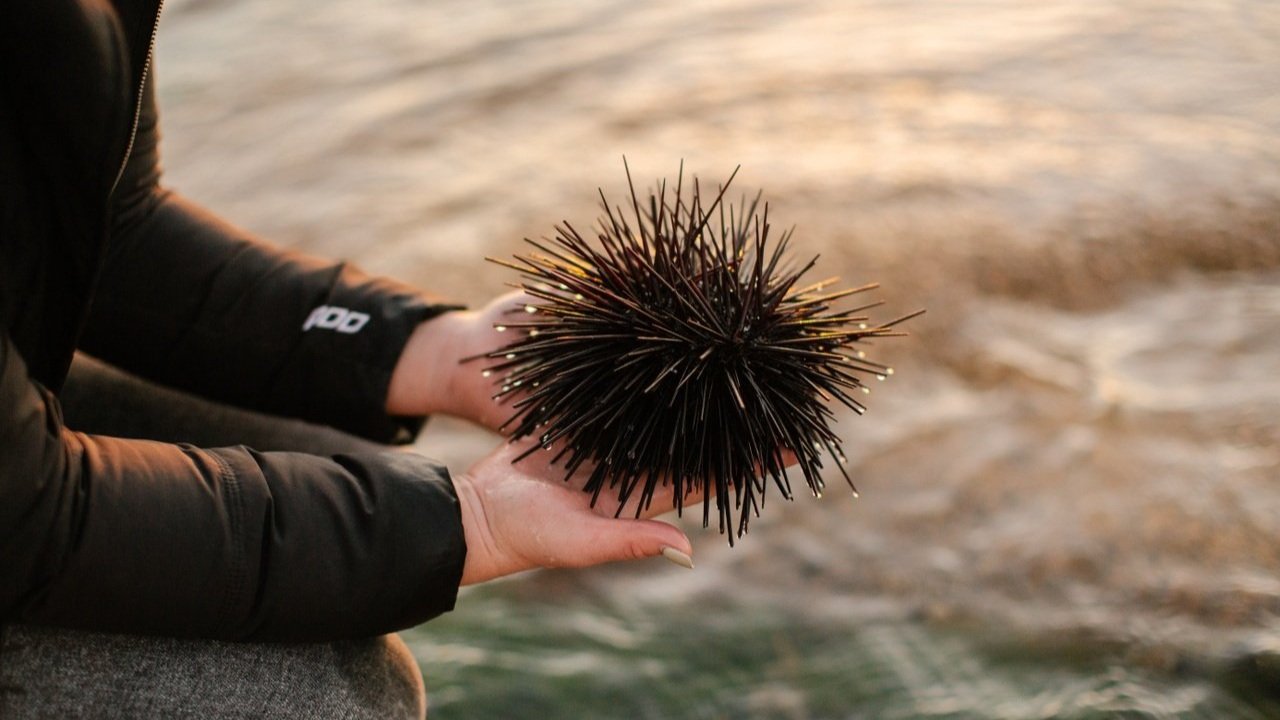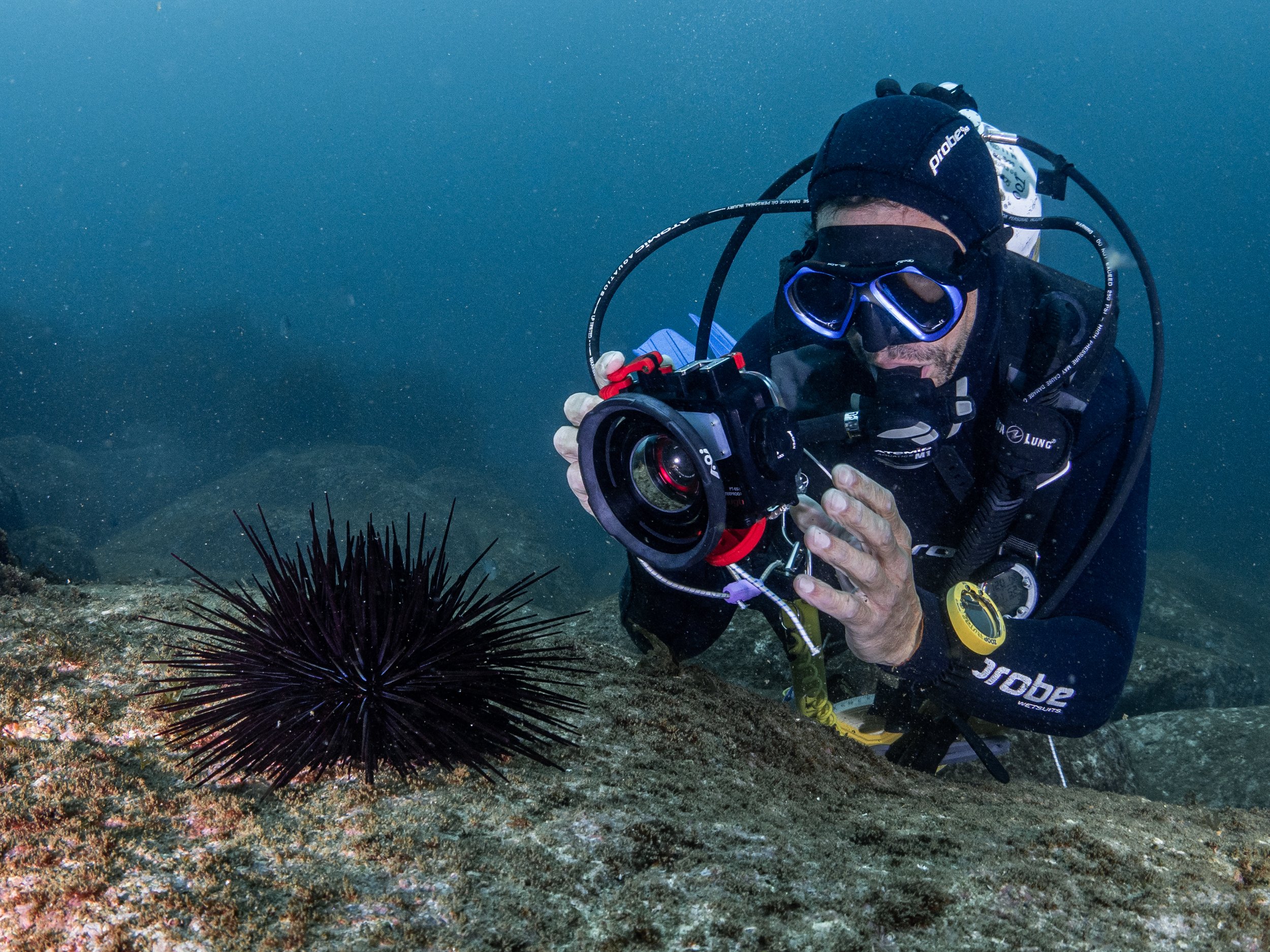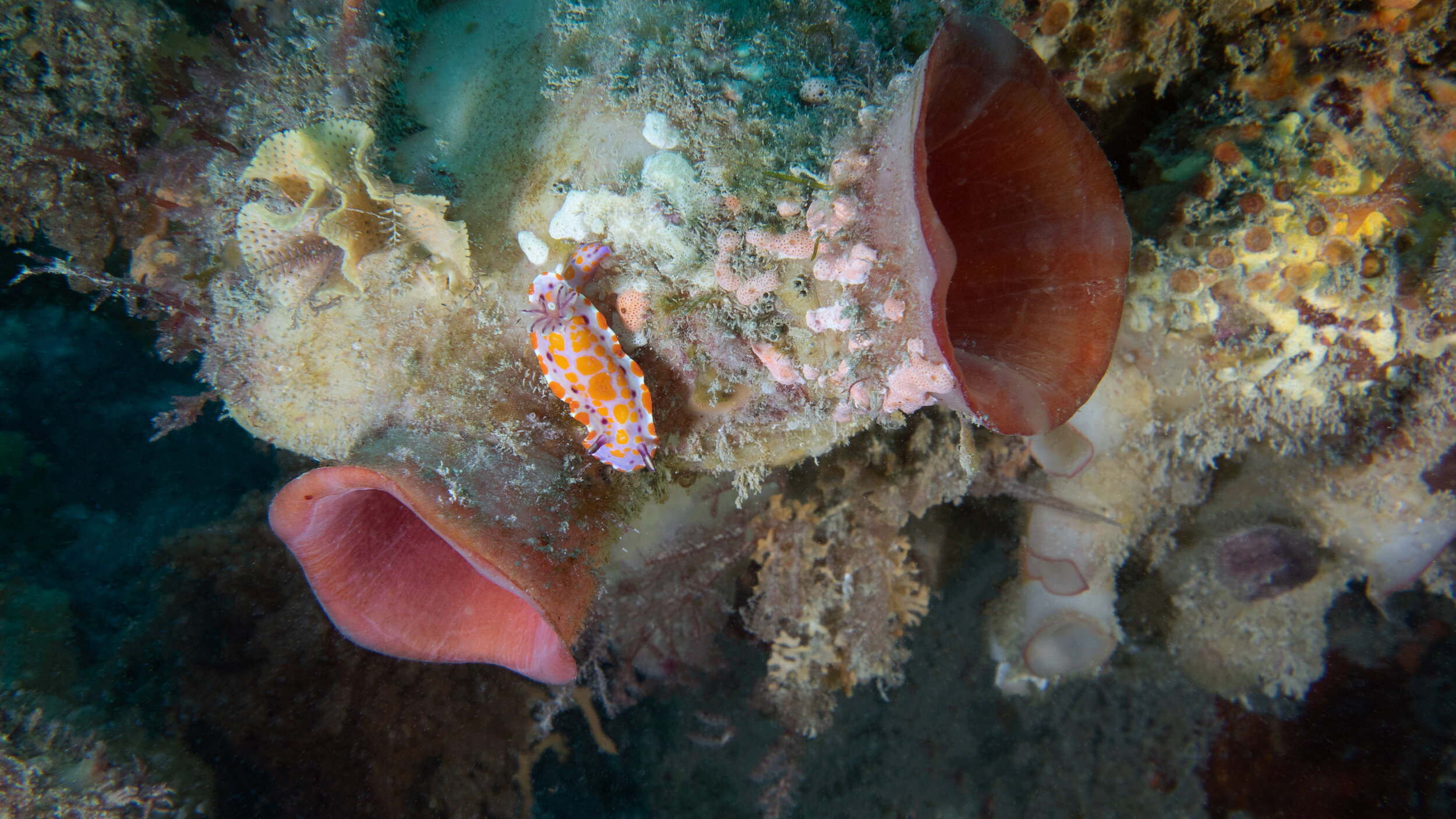longspined sea urchin
The longspined sea urchin (Centrostephanus Rodgersii) or just “Centro” is an echinoderm, meaning this animal belongs to a group of marine invertebrates including sea stars and sea cucumbers which all have “spiky skin”. As its name implies, the longspined sea urchin is armed with exceptionally long, black, moveable black spines. Well protected from predators, the spines contain an irritant toxin, which is dispersed when pricked.
Urchin Barrens
Within a balanced ecosystem, the sea urchin must have predators otherwise they can be devastating to their own environments creating what is called an urchin barren, an area where the urchin population grows unchecked resulting in overgrazing of the kelp forest and a loss of biodiversity within the reef habitat. There is a hundredfold drop in primary production when ecosystems go from kelp bed to an urchin barren.
Hardy herbivores
Once an urchin barren is formed, it’s basically there for good. Unlike any other herbivore on Earth when the sea urchins have eaten all the seaweed and there's nothing left, the population is able to survive and carry on living within the barren. The urchins maintain the barrens by switching their diet to feed on the microalgae on the rock, as well as picking up any drift seaweed that happens to be washing across the urchin barren. Many urchin species can even take up amino acids directly from seawater, so they have a broad suite of adaptations to survivorship.
Moving south
The longspine sea urchin is native to New South Wales and eastern Victoria. But in 1978 the first animal was detected in Tasmania where it has since increased dramatically in numbers. The urchin arrived in Tasmania due to changes in ocean climate and ocean current conditions, specifically an increase in strength of the East Australian Current. The species is now very widespread in eastern Tasmania and the populations have built up in many places to an extent that they have destructively overgrazed seaweeds, especially the golden kelp. Without kelp forest habitat, important seafood industries like lobster or abalone aren’t viable.
The climate-driven southward range expansion of Centro is one of the largest and most immediate threats to kelp forests of the GSR. It is estimated that around 2,000 km of Great Southern Reef coastline, an area comparable to the length of the Great Barrier Reef is now impacted by Centro overgrazing.
A serious threat to the GSR
In 2001, Scott Ling took on an ambitious project: surveying 156 sites along Tasmania's east coast to count longspined sea urchins and assess their ecological impact. The aim was to gauge the severity of the issue and monitor ongoing changes. "This is where we first realised the full extent of the problem," Ling recalls.
Fast-forward to 2016-2017, Ling and his team revisited those same sites. The findings were startling. "The extent of overgrazing had almost quadrupled over 15 years," Ling states. The evidence was irrefutable; immediate action was imperative.
"People are now growing awareness of the sea urchin issue. And there's a growing awareness of some of the management levers that can be pulled," Ling explains.
“Projections suggest that without a meaningful response, approximately half of all reefs in eastern Tasmania could become urchin barren grounds by the mid-2030s.”
Intensive interventions
Although total eradication of the longspined urchin is not considered possible, a lack of active intervention is predicted to result in a steady increase in urchin barrens. The scale of the issue is enormous, so it’s just too difficult for divers to remove urchins by hand. Proactive management of urchin overgrazing such as rebuilding urchin predators and upscaling of culling and/or harvesting activities have been suggested to be a ‘plausible means of control’.
Initially it was thought that there were no viable markets for the longspined sea urchin as the roe was considered bitter and unpalatable. However, over recent years changes in processing methods and further exploration of potential markets has seen the urchin develop into a valued commodity and provides a glimpse of hope for the future management of this species along the Great Southern Reef.
2023 Senate Inquiry
In November 2023, A Senate Report on Centro has recommended the federal government work with state counterparts to support and develop fisheries that could harvest and process longspined sea urchins, involving local, regional and First Nations communities in these opportunities.
One example of a harvest program is being piloted in Fortescue Bay. The ‘take-all’ restoration by harvest pilot program funded by the Abalone Industry Reinvestment Fund, aims to restore 5km of habitat, providing valuable insights into the efficacy of expanded control programs.
After five days of intense harvest, over 70,000 urchins were landed which represented approximately 30% of the estimated biomass.Of these, over three quarters were above size threshold deemed profitable for processing.
Centro Task Force
The recently published Senate Inquiry report recommends that the government consider making an immediate national investment into Centro control, guided by the Centro Task Force Plan's action areas and goals.
The Centro Task Force is advocating for an immediate national investment of $55 million over the next five years. This funding is earmarked for research, monitoring, and modelling, as well as for the sustainable and cultural removal and harvesting of Centro, coupled with processing opportunities. It also calls for the development of a coordinated management approach, policy, and communication strategies to combat this urgent threat.
The Centro Task Force has developed a Business Plan to drive a unified national approach to tackling the varying challenges presented by Centro across its range.
The Centro business plan aims to protect, restore, and rehabilitate the health of the GSR, particularly in areas of ecological, economic, and cultural significance. It sets out to manage the impact of Centro on priority reef areas by implementing targeted management programs, monitoring reef recovery and preventing the formation of urchin barrens.
The plan includes four key action areas:
1) Reef Monitoring and Modelling to track changes and management outcomes
2) In-Water Centro Control and Rehabilitation Strategies to manage and restore affected areas,
3) Support for Harvesting and Processing to encourage sustainable industry practices
4) Management of Sea Country to empower Aboriginal stewardship using traditional knowledge.
Success hinges on research and development for informed management, strategic communication and community engagement for stakeholder support, a collaborative national approach involving robust partnerships across sectors, and policy development to facilitate cross-jurisdictional collaboration and effective Centro control.
Urchin Commercial Industry
The Senate Inquiry report on Invasive marine species has called for immediate national investment into Centro control. The committee recognises the potential of this emerging fishery to provide substantial employment opportunities.
Tasmania’s commercial Urchin fishery has already made significant strides, removing approximately 500 tonnes per year – that's about 6 million urchins over the last five years! Thanks to the State Government and the Abalone industry's investment, including harvest subsidies, this emerging industry has been given a vital boost. It has created over 100 jobs and invigorated regional communities.
Ongoing research indicates that the fishery is not just halting the spread of urchin barrens but also facilitating the regeneration of kelp habitats in areas with intensive fishing. To effectively control urchin populations and aid kelp restoration, maximising the Centro fishery’s potential is crucial.
IMAS researcher John Keane envisions a strategic approach "Looking ahead, on a national scale I can see fisheries as the centrepiece of urchin control, aided by predator enhancement to increase resilience on healthy reefs, take-all harvests on high value reefs for enhanced control, and select culling on extensive barrens which unfortunately have lost all value".
Fast Facts:
Species: Centrostephanus rodgersii
Family: Diadematidae (sea urchins)
Order: Diadematoida (sea urchins)
Feeding: Algae
Habitat: Crevices within reefs and rocky surfaces
Distribution: Southern Western Australia to Sydney; Tropical areas within the Indo-Pacific
Special Power: Spiked shields














